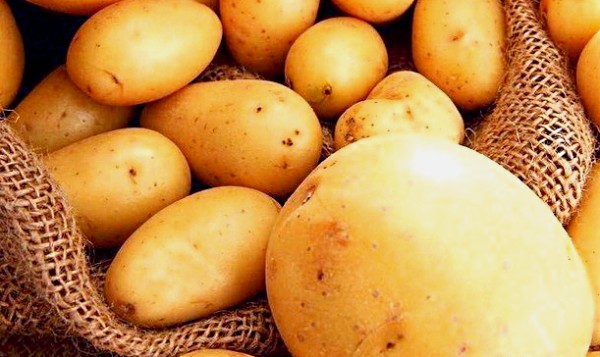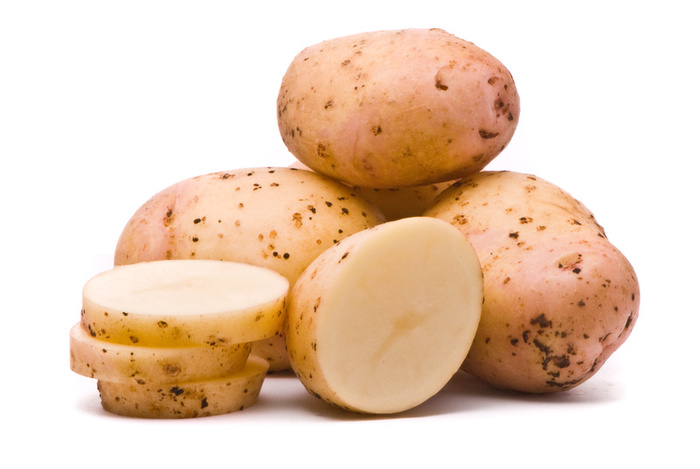Excellent Dutch Impala potato
Content
Description
The Impala variety was first developed by breeders in Holland. This table potato has been successfully grown in the middle and southern regions of Russia for more than 10 years. The plant has a fairly high stem up to 70-75 centimeters. One bush has an average of 4-5 shoots. Leaves during flowering and ripening are painted in a rich green hue. The flowers are white with a yellow center.
Now let's move on to the description of the root crops themselves. This potato variety has a smooth skin without deep eyes and roughness. The skin is quite thin, which is especially popular with consumers. The tubers have a regular oval shape. On average, subject to all the rules of agricultural technology, the weight of each potato is from 90 to 160 grams.
This variety has a low starch content (10-14%), so the roots do not boil during cooking. According to the description of consumers, the Impala variety is convenient to use for frying, soups and salads. The pulp is colored in a light creamy yellow shade.
This variety is prized primarily for its early maturity. The first crop is harvested within 45 days after planting the rudiments in the ground. If you need to collect fully ripe roots for long-term storage, you will have to wait 60 to 75 days. According to the description of industrial agronomists and home gardeners, this depends on the general climate of the area and weather conditions in a particular season.
Thanks to such a fast cycle, in the southern regions, 2 crops can be harvested per year. Each bush produces about 15 tubers on average. The description of the breeders says that with proper care, the number of potatoes can reach 21 pieces. Thus, from 1 hectare of land is harvested from 37 to 60 tons of crops per year.
Sustainability
The presented variety adapts well to weather conditions. Long-term observations have shown that the Impala can tolerate both droughts and periods of high humidity. Planting in any type of soil is allowed, but the best results are observed in plants planted in open ground.
With regard to diseases, the best resistance characteristics are noted for viruses A and Yn, potato crayfish and nematodes. The plant reacts somewhat worse to common scab and late blight of stems and tubers. The Impala variety is resistant to mechanical damage and is intended for long-term storage. On average, 98% of tubers retain their appearance after harvest.
Video "Impala Potatoes"
Agrotechnics
In the case of early maturing potato varieties, proper preparation of seeds for planting and compliance with all standards play a very important role. For a good harvest, it is better to give preference to large seed tubers. The more live eyes on a potato, the more chances you will end up with a large and lush bush with lots of root vegetables. For high-quality distillation, we recommend selecting only healthy tubers of the presented variety. As for the cuts, they are not suitable for early disembarkation. Only whole potatoes should be taken.
The Impala variety differs in that it can be planted without preheating the seed. If you want to get the earliest harvest as early as 40-45 days, we recommend preparing the seedlings in advance.Germinate it in a well-lit room at a temperature of 12 ° C to 15 ° C for 25-30 days. Growing seedlings should start in mid-March so that the prepared material can be planted by the end of April.
Finished seedlings can be planted with or without the mother tuber. In the latter version, the seedlings are divided into separate stems and planted separately. The leftover mother tuber can also be planted. Water the seedlings as needed, taking into account the nature of the soil and weather conditions. For a good harvest, it is advisable to choose light soils on which legumes, corn and crucifers have previously grown.
Early varieties, including the Impala, love mineral and organic fertilizers. This is an additional source of heat and power. Manure application improves the soil structure.
Nitrogen fertilizers must be accurately dosed and applied before planting the site. Phosphorus and potassium are recommended to be added in the fall. The exact dosages are indicated in the description of these drugs on the packaging and depend on the form of release and concentration.
The Impala must be planted in high ridges with sharp tops. This will provide the plant with extra warmth. As mentioned earlier, planting is carried out in the last decade of April, with an earlier planting possible. It is not recommended to plant early potato varieties later.
The width between the rows should be 60 centimeters. The distance between bushes in a row is 25-30 centimeters. The tubers are planted to a depth of 6-8 centimeters. To protect the shoots from night frost, you can sprinkle the young stems with loose soil. Well warms up the soil and abundant pre-watering. Further care for this potato variety includes weed control, plowing between rows and moderate watering.
Video "All about growing potatoes"
Everything you need to know about growing potatoes in this issue. The video also examines the most popular characteristics of starch varieties.



